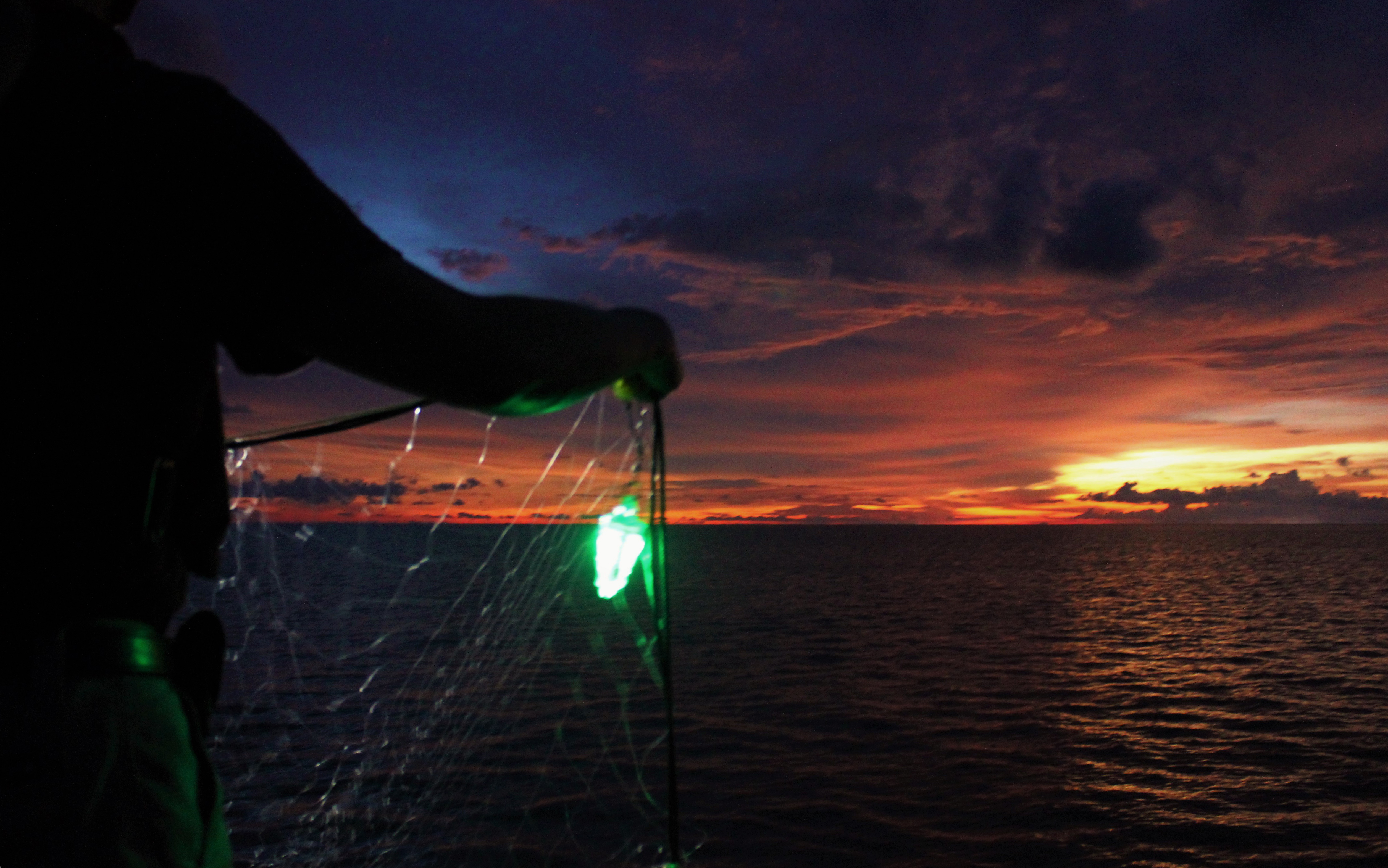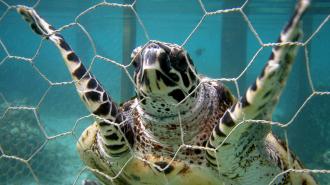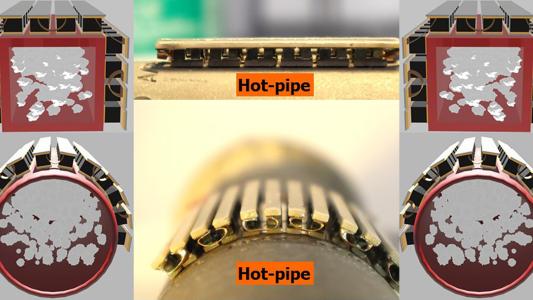By adding green LED lights to gillnets, researchers reduced the amount of bycatch swept up by fishing boats — offering a straightforward solution to a problem that’s pushing some marine species toward extinction.
Gillnets: The holes in a gillnet are only big enough for the head of a target fish to enter (and not its whole body).
As a result, some fish will swim partway through the net and then get stuck at the midsection. Those that don’t get stuck may try to reverse out of the net, at which point the netting can get caught in their gills, trapping them.
Either way, the fish are stuck in the holes when the gillnet is retrieved.
The LEDs reduced bycatch by 63% without affecting the catch rates or market value of targeted fish.
The challenge: Gillnets are notorious for trapping turtles, sharks, and other species — some of which are threatened or endangered — that fishers aren’t targeting.
These unwanted animals, collectively known as “bycatch,” are often injured or killed by the nets, and removing them can be time-consuming and dangerous for fishers.
Light it up: Research has shown that adding green LED lights to gillnets could give endangered sea turtles a “visual cue” to stay away from them. However, no one knew whether the lights could do the same for other unwanted species — until now.
For a new study, researchers deployed 28 pairs of 100-meter-long gillnets along the coast of Mexico’s Baja California peninsula. Each pair included one standard gillnet and one that had green LEDs attached every 10 meters.
After 12 hours, they pulled in the nets and cataloged the animals caught in them.

The results: The LEDs reduced overall bycatch by 63% without affecting the catch rates or market value of targeted fish. This included a 95% reduction in sharks, rays, and other related species (possibly because they have particularly sophisticated vision).
The lights also reduced the time fishers needed to retrieve and untangle the nets by 57% — equivalent to about an hour per retrieval trip.
“Making life easier for fishers by reducing the amount of time untangling bycatch is equally essential as reducing the bycatch biomass in nets,” co-author John Wang said. “It is important for fishers to know that there are tangible benefits for them.”
The bottom line: For lighted gillnets to catch on, the benefits would need to outweigh the costs for fishers, and it’s not clear they do.
The LEDs used for the study cost about $7 to $9 each, so for every mile of gillnet, a fisher could be paying up to $1,440 for lights, plus the cost of batteries — this could make illuminated gillnets too expensive, particularly in less-developed parts of the world.
The lights reduced the time fishers needed to retrieve and untangle the nets by 57%.
Saving hours untangling the nets and sorting out bycatch may help with the cost, but it’s not clear whether that’s enough to make it worth it.
The big picture: Illuminated gillnets alone might not be able to end the problem of bycatch — and there’s always going to be some — but they could be a part of the solution.
Making the nets themselves more visible or adding reflective materials to them could help, too, and the deliberate addition of “weak links” into gillnets could allow larger animals to escape while smaller, weaker ones remain trapped.
We’d love to hear from you! If you have a comment about this article or if you have a tip for a future Freethink story, please email us at [email protected].





